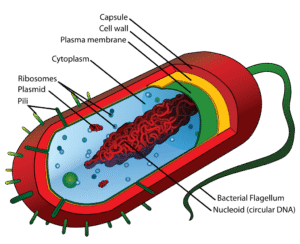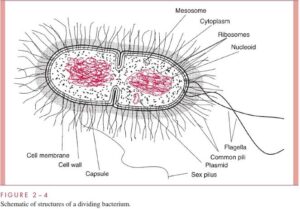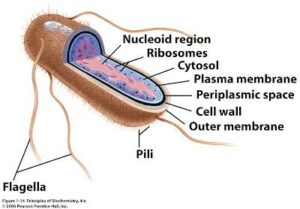Back to: MICROBIOLOGY 100 LEVEL
Welcome to class!
Hello my sharp and curious learner! I’m excited to see you back again today. You’ve been doing great, and today, we’re going to learn about some special parts of certain bacteria—capsules, flagella, pili, and spores. These parts help bacteria survive, move, and sometimes cause infections. Think of them like the tools or gadgets that help bacteria do their work and stay safe. Let’s jump right in!
Capsules, Flagella, Pili, Spores
Capsules
Imagine wrapping yourself in a raincoat during the rainy season to stay dry and safe. A capsule is a slimy, sticky layer that surrounds some bacteria. It protects them from drying out and from being attacked by the body’s immune system. Capsules help bacteria stick to surfaces too, which is how some bacteria cause infections in humans.

For example, the bacteria that cause pneumonia have capsules that help them avoid being destroyed by our white blood cells.
Flagella
Now, think about how a boat moves on water using its motor. Some bacteria move around using a tail-like structure called a flagellum (plural: flagella). These flagella spin like little propellers, pushing the bacteria through liquids like water or mucus.
This movement helps bacteria find food or escape from danger. It’s like when you swim across a river to reach your friend or run away from a buzzing mosquito!
Pili
Pili (singular: pilus) are tiny, hair-like structures on the surface of some bacteria. They are shorter and thinner than flagella. Pili help bacteria stick to surfaces or to other cells.

One important type of pili is called sex pili. These pili connect one bacterium to another and allow them to exchange genetic material—like swapping secrets or sharing a recipe. This helps bacteria become stronger or more resistant to medicines.
Spores
Lastly, some bacteria can make spores, which are like tiny survival capsules. When conditions get tough—like during drought or when chemicals try to kill them—these spores protect the bacteria inside. They are very tough and can survive heat, dryness, and chemicals.

When conditions improve, the spores “wake up” and the bacteria start growing again. This is why some bacterial infections can be hard to get rid of.
Summary
- Capsules protect bacteria and help them stick to surfaces.
- Flagella help bacteria move around like little tails.
- Pili help bacteria stick to things and share genetic information.
- Spores are tough survival units that protect bacteria in harsh conditions.
Evaluation
- What is the main job of a bacterial capsule?
- How do flagella help bacteria?
- What special role do pili play in bacterial life?
- Why are spores important for bacterial survival?
You’re uncovering the secrets of the microbial world, step by step. Keep your passion alive, and remember Afrilearn is here to support you on this exciting journey. I can’t wait to see you in the next lesson—keep shining, champion!
